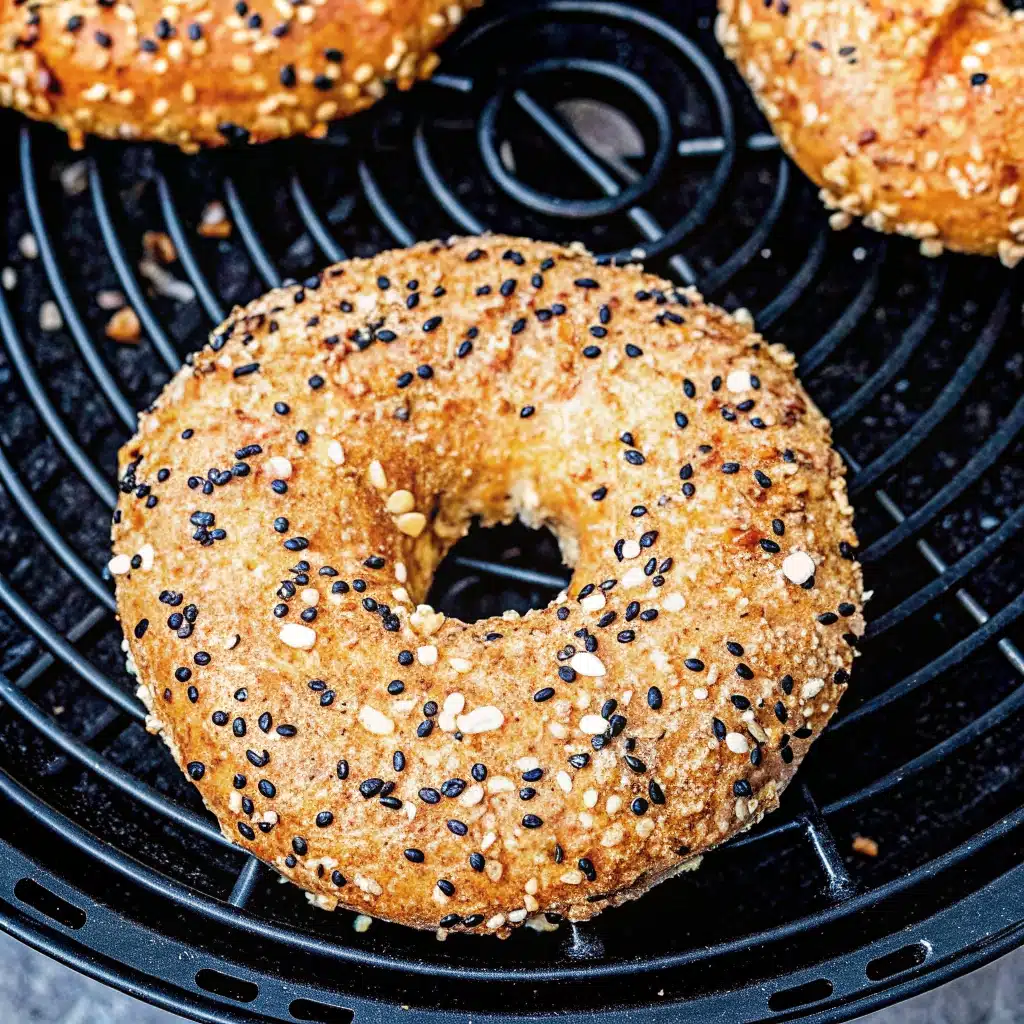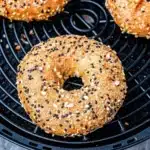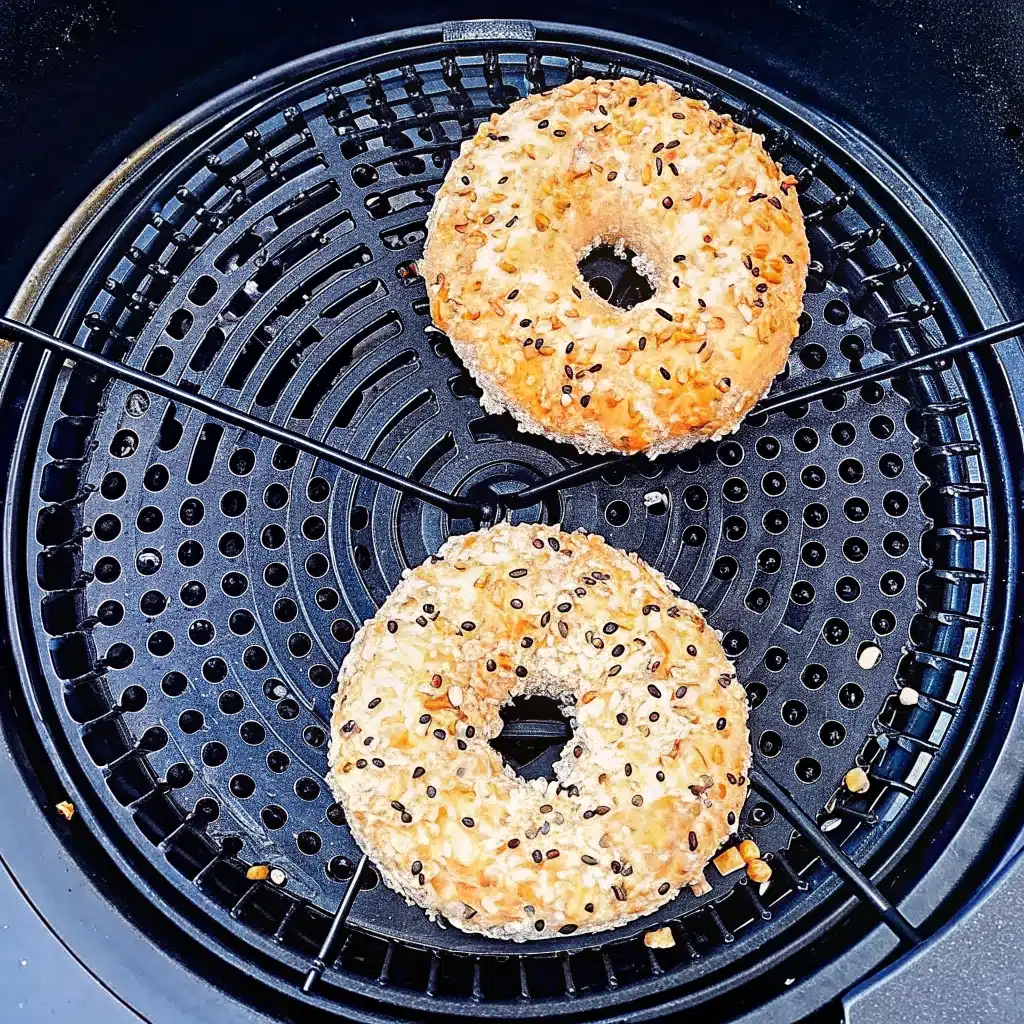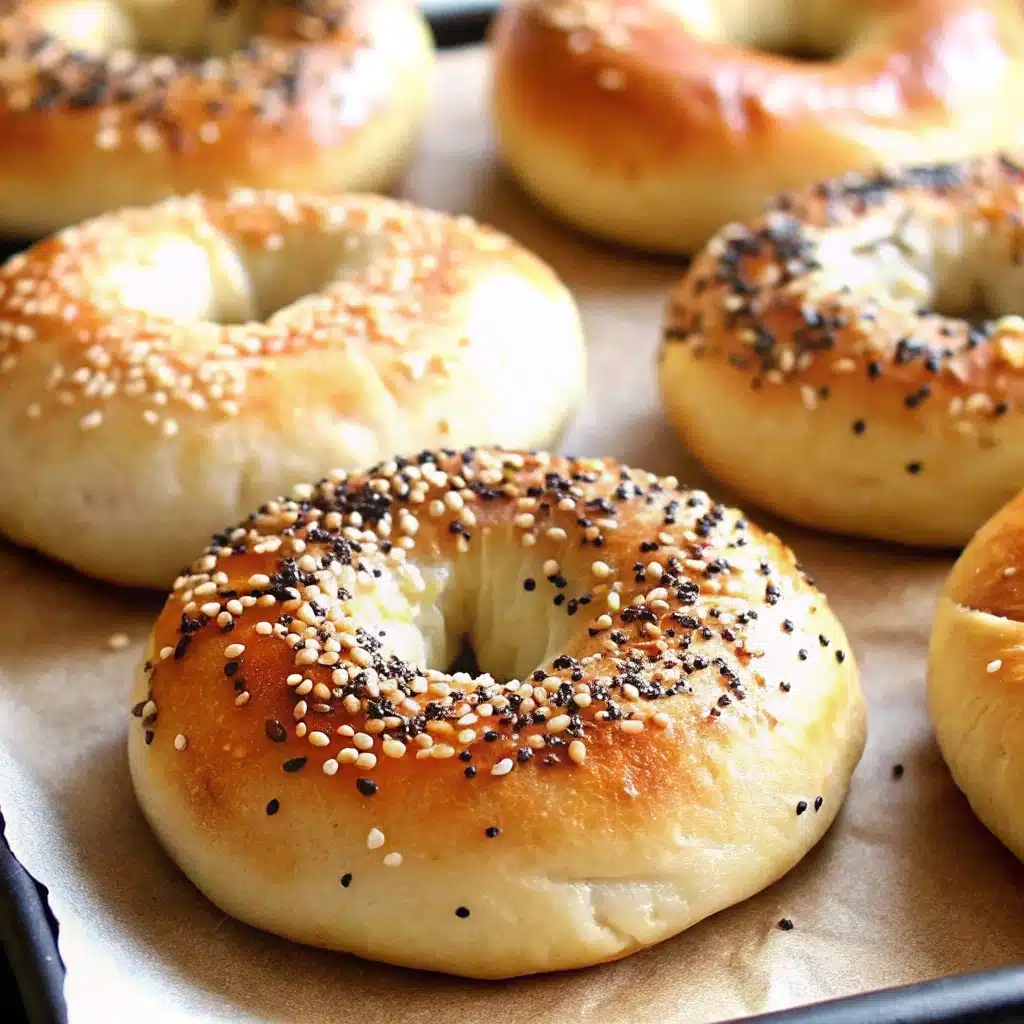Cottage cheese bagels calories are more than just a number—they’re a smart way to stay full, energized, and on track with your health goals. If you’re looking for a high-protein, lower-carb alternative to traditional bagels, these trending favorites are worth a second look. Whether you’re cutting calories, building lean muscle, or simply trying to eat cleaner, understanding how many calories are in cottage cheese bagels is essential.

This detailed guide dives into everything you need to know about cottage cheese bagels calories—from how ingredients affect the calorie count to how they compare with classic bagels. We’ll share simple recipes, diet-friendly variations, and must-know FAQs so you can enjoy every bite with confidence.
Looking for inspiration? Try this Greek yogurt protein bagel recipe to discover another high-protein twist.
Table of Contents
Understanding Cottage Cheese Bagels Calories
What Are Cottage Cheese Bagels Made Of?
Cottage cheese bagels calories depend largely on their simple yet protein-packed ingredients. These bagels are typically made with a blend of cottage cheese, flour (usually self-rising or bread flour), eggs, and sometimes baking powder or Greek yogurt to boost protein and texture. Unlike traditional boiled bagels, these are often baked—making them lighter in calories and fat.
Here’s a standard ingredient breakdown for a classic cottage cheese bagel:
| Ingredient | Amount Per Bagel | Calories |
|---|---|---|
| Cottage Cheese (2% fat) | ¼ cup | 50 |
| Bread Flour | ½ cup | 200 |
| Egg | ½ egg | 35 |
| Baking Powder | ¼ tsp | 1 |
Estimated Calories per Bagel: ~286 calories
Discover great ideas like cottage cheese bagels with bread flour to keep your nutrition balanced and satisfying.
Average Caloric Breakdown of a Standard Cottage Cheese Bagel
When discussing cottage cheese bagels calories, it’s helpful to know that most fall between 180 and 300 calories depending on how they’re prepared. Homemade versions with just a few ingredients tend to be lighter, while variations with added toppings or denser flour can increase the calorie count.
| Type | Average Calories |
|---|---|
| Basic homemade | 180–200 |
| Bread flour version | 250–270 |
| Topped with egg or avocado | 300–350 |
| Store-bought high-protein | 270–320 |
To keep your calorie intake in check, choose simple homemade recipes and use toppings sparingly.
Looking for inspiration? Try our 2-ingredient cottage cheese bagel recipe that’s light, easy, and calorie-smart.

Cottage Cheese Bagels Calories
- Total Time: 35 minutes
- Yield: 4 bagels 1x
- Diet: Low Calorie
Description
Cottage cheese bagels calories are more than just a number—they’re a smart way to stay full, energized, and on track with your health goals. From ingredient swaps to topping ideas, discover everything you need to enjoy these high-protein, lower-carb bagels without the guilt.
Ingredients
- 1 cup low-fat cottage cheese
- ¾ cup oat flour
- 2 egg whites
- 1 tsp baking powder
- Optional: 1 tbsp nutritional yeast
- Optional: 1 tsp chia seeds
Instructions
- Preheat oven to 375°F (190°C).
- Mix cottage cheese, oat flour, egg whites, and baking powder in a bowl until well combined.
- Stir in optional add-ins like chia seeds or nutritional yeast if using.
- Shape dough into bagel forms and place on a baking tray lined with parchment paper.
- Bake for 20–25 minutes until golden and cooked through.
- Cool slightly before serving with your favorite low-calorie toppings.
Notes
For fewer calories, use egg whites and low-fat dairy. For keto-friendly variation, substitute almond flour and use full-fat cottage cheese.
- Prep Time: 10 minutes
- Cook Time: 25 minutes
- Category: Breakfast
- Method: Baked
- Cuisine: Healthy
Nutrition
- Serving Size: 1 bagel
- Calories: 185
- Sugar: 2g
- Sodium: 320mg
- Fat: 4g
- Saturated Fat: 1g
- Unsaturated Fat: 3g
- Trans Fat: 0g
- Carbohydrates: 22g
- Fiber: 3g
- Protein: 16g
- Cholesterol: 5mg
Factors That Affect Cottage Cheese Bagels Calories
Ingredients and Their Nutritional Impact
When it comes to cottage cheese bagels calories, one of the biggest influencers is the ingredient list. While the name suggests cottage cheese as the star, variations in flour, cheese fat content, and added ingredients can cause the calorie count to fluctuate significantly.
Here’s a breakdown of common ingredients and their caloric impact:
| Ingredient | Calories per Serving | Effect on Final Calories |
|---|---|---|
| Cottage Cheese (2% fat) | 90 per ½ cup | Moderate protein, lower fat |
| Full-Fat Cottage Cheese | 110 per ½ cup | Higher fat = more calories |
| Bread Flour (½ cup) | ~200 | High carbs, denser bagel |
| Almond Flour (½ cup) | ~160 | Lower carb, more fat |
| Greek Yogurt (½ cup) | ~90 | Adds protein, creamy texture |
| Egg | ~70 | Helps bind & boost protein |
| Everything Bagel Seasoning | ~5–15 per tsp | Flavorful but adds sodium |
As you can see, simply switching from full-fat to low-fat cottage cheese can shave off 20–30 calories per serving. Swapping bread flour for almond or oat flour also makes a notable difference, especially for low-carb or keto plans.
Don’t miss our Bethenny Frankel cottage cheese bagel take for a unique spin on this classic.
Portion Size and Serving Variations
Another key factor in cottage cheese bagels calories is how big your bagel actually is. A mini bagel made with ¼ cup of flour and 2 tablespoons of cottage cheese will naturally be lower in calories than a full-sized bagel made with double that amount.
Let’s compare:
| Bagel Size | Approx. Weight | Estimated Calories |
|---|---|---|
| Mini (70g) | ~2.5 oz | 170–190 |
| Regular (110g) | ~4 oz | 250–290 |
| Oversized (150g) | ~5.3 oz | 320–360 |
Additionally, how you serve your bagel matters. Toasted with a tablespoon of light cream cheese? Add 50–60 calories. Add nut butter? You’re looking at 90–100 extra.
Check out this high-protein cottage cheese bagel recipe to portion smart and fuel up right.

cottage Cheese Bagels vs Regular Bagels: A Caloric Comparison
Side-by-Side Nutritional Chart
When you’re trying to eat healthier, understanding the calorie differences between foods matters. And if you’re comparing cottage cheese bagels calories with traditional bagels, the difference can be quite surprising. While both satisfy your carb cravings, cottage cheese bagels pack more protein and often fewer calories, especially when homemade.
Here’s a side-by-side look:
| Type of Bagel | Average Calories | Protein | Carbs | Fat |
|---|---|---|---|---|
| Traditional Plain Bagel | 280–330 | 9g | 55g | 2g |
| Cottage Cheese Bagel | 180–250 | 15–20g | 25g | 4g |
| Whole Wheat Bagel | 250–300 | 10g | 48g | 3g |
| 4-Cheese Bagel (store-bought) | 350–420 | 12g | 45g | 14g |
This comparison shows that cottage cheese bagels calories are usually 20–30% lower than traditional options, with nearly double the protein and fewer carbs. That makes them a better choice for those watching calorie intake or managing blood sugar.
Discover more with our Cottage Cheese Gluten-Free Bagel recipe — perfect for those avoiding wheat but still craving that chewy texture.
Protein, Carbs, and Fats: Which Wins?
If you’re eating with intention—whether it’s for weight loss, muscle growth, or energy control—macronutrient balance is key. That’s where cottage cheese bagels shine.
Let’s break it down:
- Protein: Cottage cheese naturally boosts the protein count, which helps increase satiety and muscle repair. Traditional bagels just don’t compete.
- Carbs: Lower in refined carbs, especially if made with almond or oat flour, cottage cheese bagels prevent the post-carb crash common with white flour bagels.
- Fat: While cottage cheese bagels can have slightly more fat, especially if you use full-fat dairy, it’s balanced by the protein and lower sugar content.
So which wins? For most people seeking a healthier alternative with lasting energy, cottage cheese bagels are the clear nutritional champion.
Looking for another smart alternative? Don’t miss our 2-ingredient cottage cheese bagel recipe that keeps carbs low and flavor high.
How Healthy Are Cottage Cheese Bagels?

Nutrient Density: What You’re Really Getting
If you’re wondering whether cottage cheese bagels calories are worth your attention, the answer is yes—and it goes beyond just numbers. These bagels deliver high nutritional value per bite, offering protein, calcium, and important nutrients without excessive calories. Unlike traditional bagels that are high in calories and low in protein, cottage cheese bagels deliver a nutritious boost—rich in both macro- and micronutrients your body craves.
Take a look at the typical nutrient breakdown in one medium-sized cottage cheese bagel (approx. 240–260 calories):
| Nutrient | Amount | Health Benefit |
|---|---|---|
| Protein | 16–20g | Supports muscle growth & repair |
| Calcium | 100–150mg | Strengthens bones and teeth |
| Carbohydrates | 22–28g | Fuel for your day |
| Fiber (optional) | 2–4g | Enhances digestion |
| Fat | 4–6g | Helps with satiety and hormones |
So what makes cottage cheese bagels calories healthier than others? They’re lower in sugar and refined carbs, higher in protein, and they keep you full longer.
Discover great flavor and balance in our Cottage Cheese Bagels Recipe—perfect for starting your day right.
Are They Good for Weight Loss or Muscle Gain?
Absolutely. The balance in cottage cheese bagels calories makes them a go-to for many diet goals. Thanks to their high protein-to-calorie ratio, they can help reduce cravings, support fat loss, and fuel muscle recovery—all without blowing your daily calorie limit.
Here’s why they work for different lifestyles:
- Weight Loss: One bagel averages 240–260 calories but keeps you full for hours.Top with your favorite veggies for a complete, low-calorie meal that’s both satisfying and nutrient-packed.
- Muscle Gain: Want to bulk up? Spread on some nut butter or top with eggs to increase both calories and protein.
- Blood Sugar Control: Fewer refined carbs means cottage cheese bagels calories don’t spike your glucose levels like white bread bagels often do.
For anyone counting calories or macros, these bagels make portion control easier. Their protein content naturally curbs hunger while still satisfying your bread cravings.
Looking for smart ways to use those calories? Try our high-protein cottage cheese bagels recipe tailored for fitness and clean eating.
How to Make Low-Calorie Cottage Cheese Bagels at Home
Ingredients to Keep the Calories Low
Creating your own bagels gives you full control over what goes in—and more importantly, how many cottage cheese bagels calories you consume per serving. If you’re aiming to keep things light and clean, ingredient swaps are your secret weapon.
Here’s how to build a low-calorie base:
| Ingredient | Why Use It | Calories (Per Serving) |
|---|---|---|
| Low-Fat Cottage Cheese | Keeps protein high, fat low | ~80 per ½ cup |
| Oat Flour | Gluten-free, lower glycemic index | ~150 per ½ cup |
| Egg Whites | Less fat, same structure | ~34 per 2 egg whites |
| Baking Powder | Adds lift without extra calories | ~1 per ¼ tsp |
| Greek Yogurt (optional) | Boosts protein, creamy texture | ~50 per ¼ cup |
By using egg whites instead of whole eggs and switching to oat or almond flour, you can bring your cottage cheese bagels calories down to as low as 170 per serving—without sacrificing texture or flavor.
Want to go grain-free? Replace flours with flax meal or almond flour for keto-style bagels.
Looking for inspiration? Try our Cottage Cheese Gluten-Free Bagel recipe—it’s perfect for gluten-free and low-calorie diets.
Recipe Ideas Using High-Protein Add-ins
You can level up your homemade bagels with functional ingredients that boost flavor without pushing cottage cheese bagels calories through the roof. These optional add-ins offer extra health benefits while keeping things tasty and satisfying.
Tasty & Protein-Packed Add-ins (per bagel):
- Chia Seeds (1 tsp): Adds omega-3s and fiber (~20 calories)
- Shredded Zucchini (¼ cup): Moisture & nutrients with just 5–7 calories
- Nutritional Yeast (1 tbsp): Cheesy taste, B12, and protein (~20 calories)
- Psyllium Husk (1 tsp): Aids digestion, adds fiber (~8 calories)
Here’s a sample low-calorie cottage cheese bagel recipe:
Low-Calorie Protein Bagel (Makes 4)
- 1 cup low-fat cottage cheese
- ¾ cup oat flour
- 2 egg whites
- 1 tsp baking powder
- Optional: 1 tbsp nutritional yeast, 1 tsp chia seeds
Mix all ingredients. Shape into bagels. Bake at 375°F (190°C) for 20–25 minutes.
Calories per bagel: ~185
Need a visual? Check out our popular 2-Ingredient Cottage Cheese Bagel recipe—simple, quick, and only a handful of ingredients.
Best Toppings for Cottage Cheese Bagels (Without Blowing Your Calorie Count)
Sweet and Savory Low-Cal Topping Ideas
Even if you’ve mastered the art of making your own low-calorie bagels, the toppings can quickly turn your smart snack into a calorie bomb. Choosing wisely is key to keeping cottage cheese bagels calories under control while still enjoying flavor and texture.
Let’s break down some smart sweet and savory topping options:
| Topping Idea | Type | Calories (Per Serving) | Why It Works |
|---|---|---|---|
| Sliced Strawberries (¼ cup) | Sweet | ~15 | Adds sweetness, Vitamin C |
| Cinnamon + Stevia | Sweet | 0–5 | Tastes indulgent, calorie-free |
| Light Cream Cheese (1 tbsp) | Savory | ~35 | Creamy, satisfying, less fat |
| Hummus (1 tbsp) | Savory | ~25 | Protein boost + fiber |
| Mashed Avocado (1 tbsp) | Savory | ~45 | Healthy fats, creamy texture |
| Tomato + Basil | Savory | ~10 | Fresh flavor, low-cal option |
| Peanut Butter Powder (1 tbsp) | Sweet | ~25 | High protein, fewer fats |
| Sliced Cucumbers + Lemon | Savory | ~5 | Refreshing, hydrating, crisp |
All of these options keep your full cottage cheese bagels calories meal around 200–250 calories, depending on your base. That makes it perfect for a weight-conscious breakfast or post-gym snack.
Don’t miss our twist on Bethenny Frankel Cottage Cheese Bagels for topping inspiration from a wellness guru.
Avoiding Hidden Calories in Spreads and Add-ons
You might not realize how quickly spreads, oils, and toppings can add up. Here are common culprits that sabotage your low-calorie efforts:
| Add-On | Serving Size | Surprise Calories |
|---|---|---|
| Flavored Cream Cheese | 2 tbsp | 90–110 |
| Honey Drizzle | 1 tbsp | ~64 |
| Full-fat Peanut Butter | 1 tbsp | ~90 |
| Butter | 1 tbsp | ~100 |
| Bacon Bits | 2 tbsp | ~80 |
| Shredded Cheese (full-fat) | ¼ cup | ~110 |
A good rule? If it’s creamy, oily, or sugary—check the label. Even seemingly small amounts can double your cottage cheese bagels calories without adding meaningful nutrition.
For a clean, satisfying spread, try:
- Mashed berries with a pinch of chia
- Greek yogurt “frosting” with vanilla extract
- A smear of mustard or tahini for savory options
Want to stay in control? Explore our Cottage Cheese Bagels with Bread Flour post, where we share balance-focused topping combinations.
Cottage Cheese Bagels for Special Diets
Gluten-Free, Low-Carb, Keto & Diabetic-Friendly Options
One of the biggest advantages of focusing on cottage cheese bagels calories is that they’re incredibly adaptable for different dietary needs. Whether you’re gluten-sensitive, eating low-carb, or managing diabetes, there’s a way to enjoy these protein-packed bagels without the guilt.
Let’s explore how to tweak recipes to fit your goals:
Gluten-Free
Swap traditional flour with:
- Oat flour
- Almond flour
- Coconut flour
Use xanthan gum or psyllium husk for binding, and opt for certified gluten-free baking powder.
Calories for gluten-free cottage cheese bagels typically range from 160–200 depending on the flour type.
Looking for a tested version? Check out our Cottage Cheese Gluten-Free Bagel recipe.
Low-Carb / Keto
Replace high-carb flours with almond flour and reduce or eliminate any yogurt. Use full-fat cottage cheese for fat-burning fuel.
Keto-friendly version:
- ½ cup almond flour
- ½ cup full-fat cottage cheese
- 1 egg + ½ tsp baking powder
Calories per serving: ~190
Net carbs: 5g or less
Diabetic-Friendly
Focus on low glycemic index ingredients:
- Use high-fiber flour blends
- Avoid sweeteners like honey or syrup
Pair your bagel with protein (eggs, tofu) to help regulate blood sugar.
Bonus Tip: Cinnamon and chia seeds can help with blood sugar control without affecting cottage cheese bagels calories significantly.
Vegan Alternatives and Substitutions
Yes, even cottage cheese bagels can go vegan! While traditional versions use dairy and eggs, plant-based ingredients can deliver the same texture with a nutritional punch.
Here’s how to veganize your recipe:
| Ingredient to Replace | Vegan Swap | Notes |
|---|---|---|
| Cottage Cheese | Silken tofu or vegan ricotta | Choose low-fat options |
| Eggs | Flax eggs or chia eggs | Helps bind and add fiber |
| Yogurt (if used) | Coconut or almond yogurt | Adds moisture and flavor |
Example:
- ½ cup vegan ricotta
- ½ cup oat flour
- 1 flax egg
- Baking powder
Calories per bagel: ~180–200
Protein-rich and completely dairy-free.
Just be mindful that some dairy-free substitutes may have slightly more fat or carbs, which can shift the overall cottage cheese bagels calories upward by 10–20 calories.
Meal Planning with Cottage Cheese Bagels
Breakfast, Lunch & Snack Ideas Using Cottage Cheese Bagels
Incorporating these protein-rich bagels into your day is easier than you think. When you’re aware of cottage cheese bagels calories, you can confidently build meals that are satisfying, energizing, and aligned with your health goals.
Here’s how you can enjoy them throughout the day without overdoing your calorie limit:
Breakfast
Start your morning with a fiber-rich and protein-packed combo:
| Meal Idea | Add-ons | Estimated Total Calories |
|---|---|---|
| Bagel + Avocado + Cherry Tomatoes | 1 tbsp mashed avocado | ~280 |
| Bagel + Scrambled Egg Whites | 3 egg whites, spinach | ~260 |
| Bagel + Greek Yogurt Dip | Dill, lemon, herbs | ~250 |
Don’t miss our Cottage Cheese Bagels Recipe for the perfect base to start every day with flavor and balance.
Lunch
A well-balanced mid-day meal should include greens, healthy fats, and lean proteins. Try slicing your bagel and loading it like a sandwich.
| Idea | Protein Source | Add-ins | Calories |
|---|---|---|---|
| Tuna Bagel Sandwich | Tuna + Greek yogurt | Lettuce, onions | ~300 |
| Turkey & Hummus Bagel | Deli turkey + hummus | Cucumber, sprouts | ~320 |
| Chickpea Salad Bagel (Vegan) | Mashed chickpeas + tahini | Spinach, paprika | ~310 |
Using these ideas, cottage cheese bagels calories can be managed easily within a light, energizing lunch format.
Snack or Light Dinner
Keep it simple and fresh in the evening or for a quick post-workout bite:
- Half a bagel + almond butter (1 tsp): ~140 calories
- Full bagel + cottage cheese + cinnamon: ~230 calories
- Bagel + sautéed mushrooms + low-fat cheese: ~260 calories
Each combination keeps your energy steady and fits into balanced daily nutrition.
How to Pair Them with Other Healthy Foods
To build complete meals around your bagel, consider these simple pairing ideas:
| Goal | Pair With | Why It Works |
|---|---|---|
| Weight Loss | Leafy greens, lean protein (e.g. eggs) | Adds bulk, fewer calories |
| Muscle Gain | Healthy fats + extra protein | Increases calorie density, supports growth |
| Gut Health | Yogurt dip, fermented veggies | Adds probiotics and digestive enzymes |
| Energy Boost | Nut butter + banana slices | Great combo of protein + quick carbs |
Looking for creative combos? Don’t miss our Cottage Cheese Bagels with Bread Flour for satisfying ideas you’ll want to meal prep every week.
FAQs
How many calories are in a cottage cheese bagel?
A standard homemade cottage cheese bagel typically contains between 180 and 260 calories, depending on ingredients used. If you’re making yours with low-fat cottage cheese and oat flour, you can stay on the lower end of that range. Add-ins like shredded cheese or nut butter can push the total higher.
Quick breakdown:
Base recipe (cottage cheese + flour): ~200 calories
With light toppings: ~250–270 calories
With high-fat additions (cheese, nuts): 300+ calories
Is cottage cheese on a bagel good for you?
Yes—cottage cheese is high in protein and relatively low in fat, making it a smart topping for those watching their macros. Pairing it with a bagel, especially one made from whole grains or protein-based flour, makes for a balanced, satisfying meal.
Protein boost: Cottage cheese can add 13–18g of protein per serving.
Calories added: ~90–110 depending on portion size and fat content.
For best results, opt for a low-fat variety and pair it with a whole grain or homemade cottage cheese bagel to maximize nutritional benefits without spiking calories.
How many calories are in cottage cheese toast?
Cottage cheese toast—similar in concept to cottage cheese bagels—can range from 150 to 280 calories, depending on the bread type and toppings. Using low-calorie bread (like Ezekiel or sourdough) and low-fat cottage cheese will keep it on the lighter side.
Toast Type
Topping
Total Calories
Whole grain toast
Low-fat cottage cheese + berries
~190
Sourdough toast
Cottage cheese + cucumber
~210
Rye toast
Cottage cheese + avocado
~260
This option is especially great if you’re looking to vary your meals while still keeping an eye on cottage cheese bagels calories and similar meals.
How many calories does a 4 cheese bagel have?
A 4-cheese bagel is typically much higher in calories due to added full-fat cheeses like cheddar, mozzarella, Parmesan, and cream cheese. On average, one of these bagels packs between 350 to 420 calories.
Cheese Bagel Type
Calories
Homemade (light cheeses)
~300
Bakery/store-bought
400–450
While delicious, this variety is better saved for indulgent meals. If you’re managing calories, opt for a homemade cottage cheese version to enjoy the same satisfaction with fewer calories.
Conclusion
Understanding cottage cheese bagels calories is the first step toward smarter meal planning, cleaner eating, and guilt-free satisfaction. Whether you’re counting macros, managing your weight, or just exploring healthier alternatives to traditional bagels, cottage cheese bagels check all the boxes: high in protein, moderate in carbs, customizable for any diet, and incredibly delicious.
We’ve explored how ingredients, toppings, and portion size affect the calorie count, and we’ve shown you how to build balanced meals throughout the day using these nutrient-packed bagels. From gluten-free and keto variations to diabetic- and vegan-friendly tweaks, there’s a version for everyone.
If you’re ready to ditch empty carbs for something that actually fuels your body, cottage cheese bagels offer the taste and nutrition without compromise.
Looking for more recipe inspiration? Don’t miss our High-Protein Cottage Cheese Bagels Recipe — it’s one of our most popular options among fitness lovers and foodies alike.
Fore more recipes follow me in Facebook, medium and Pinterest




